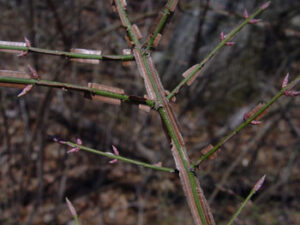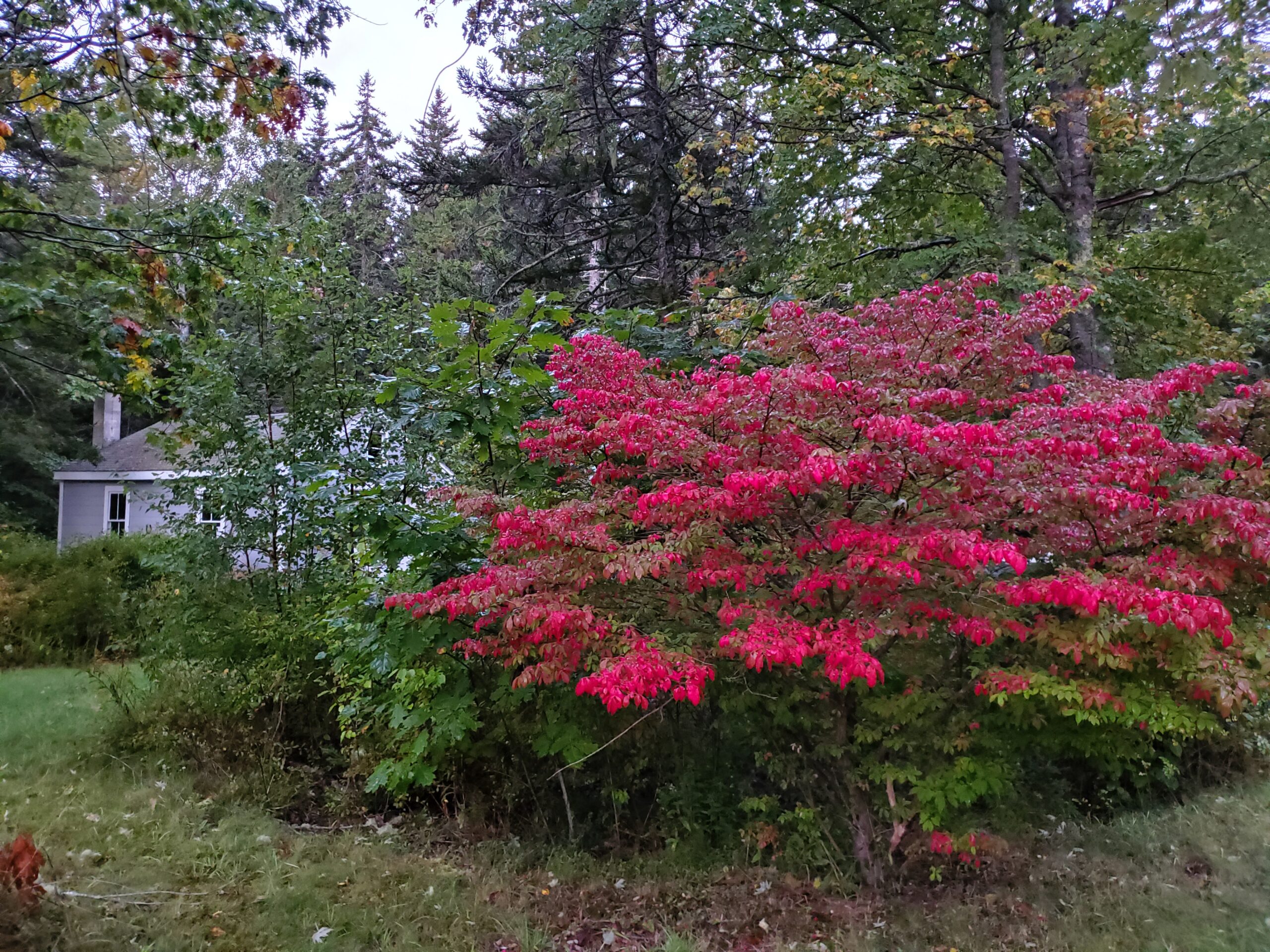October 13: The Sinister Burning Bush

Burning Bush
This time of year, it seems like all of the plants are competing with each other to show off their brightest and boldest colors. We enjoy the brilliant foliage on our walks and our drives, sometimes stopping in our tracks at some of the showier specimens. Fall colors are so desirable that landscapers often think of them when putting in plantings, which is the case of the aptly named burning bush. This shrub is lackluster green for most of the year, hardly noticeable in front of homes and businesses around town. But this time of year the burning bush explodes as if on fire, turning a brilliant red and turning heads everywhere.

Burning Bush Corky Wings
While we might enjoy the beauty of the burning bush for the few days that it is lit up, it is in fact a very sinister plant to have around. This is because burning bush is an invasive species, spreading easily by berry eating birds. These birds fly over our natural areas and leave behind the seeds, which grow happily into large bushes that outcompete our native plants. Burning bush sometimes forms dense thickets where nothing else can grow, such as can be seen in an old homestead clearing at Ovens Mouth East preserve. Boothbay Region Land Trust maps the location of several species of invasive plants and teams of volunteers work countless hours every year to try to remove them.
When burning bush is not showing its vivid colors, it can be identified by the “corky wings” that are found along the stems of the plant, almost appearing as if someone glued small rectangular pieces of cardboard to each branch. The leaves are simple and grow opposite of one another on the branches, usually 1-2 inches long and finely toothed. In the late spring, the bush has very small 4-petaled light yellow to light green flowers. In the early fall the fruit appears as a red-orange capsuled seed surrounded by two purple fleshy coverings which split open.

Black Huckleberry
Burning bush is native to northeastern Asia, and arrived in our region as an ornamental plant. While I can’t argue on the attractive nature of the fall foliage of this invasive plant, I can point out that so many of our native bushes also offer spectacular color this time of year. These plants would make a great alternative to burning bush while offering food, shelter, and other benefits to our native wildlife. They are also available from nurseries for landscaping use. A quick google search of alternatives to burning bush will give you endless ideas, including our native low bush blueberry and black huckleberry, both of which have the same beautiful red foliage in the fall.
Maine classified burning bush as an invasive plant in 2017 and banned sales and distribution of the plant the following year. While the new rules do not require the removal of burning bush already planted, it is a good idea to do so. The Maine Department of Agriculture, Conservation, and Forestry offers information on how to control many invasive species and it is worth researching, as different plants require different control methods. For burning bush, it is possible to pull up small plants when the soil is moist, while larger plants will require continual pruning as resprouting will occur. BRLT regularly offers classes on invasive species for those who are interested in learning more.




